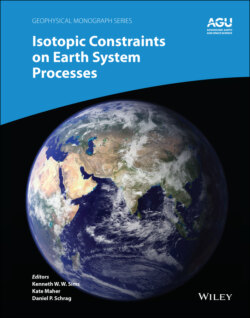Читать книгу Isotopic Constraints on Earth System Processes - Группа авторов - Страница 54
2.4. DISCUSSION
ОглавлениеIn the first study of its kind on this topic, Richter et al. (1999) performed diffusion couple experiments in the simplified CaO‐Al2O3‐SiO2 system and developed a theoretical framework whereby the magnitude of diffusive isotopic fractionations correlates positively with the initial concentration contrast between starting materials and the mass dependence on diffusivity. The results presented here, however, show that large diffusive isotope effects can arise even when the initial concentration contrast is very small, as is the case for CaO. Another peculiarity of this system is the extremely fast diffusion of K2O, which appears to be largely decoupled from that of SiO2. This bears similarities to the behavior of Li2O in the basalt‐rhyolite experiments of Richter et al. (2003), but unlike Li2O, K2O is a major component, and because of requirements for mass and charge balance, its diffusion influences the profiles of all the other major elements either by dilution, enrichment, or diffusive coupling. Not only does K2O diffuse rapidly, but it also exhibits large diffusive isotope effects despite there being only a 2 amu difference between 41K and 39K. In following sections, we adapt an existing framework that enables us to model the SiO2, CaO, and K2O profiles and to quantify the mass dependence on diffusion coefficients in order to place the phonolite‐rhyolite results in the context of previous studies.
